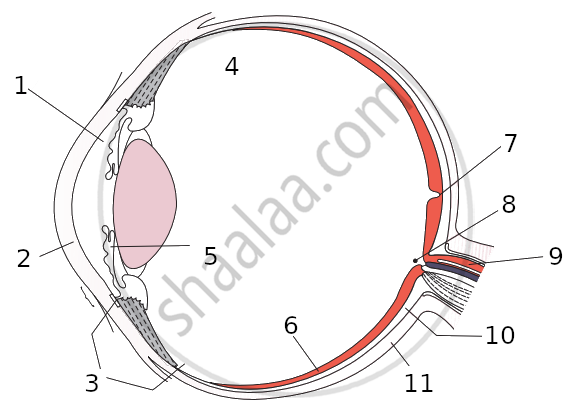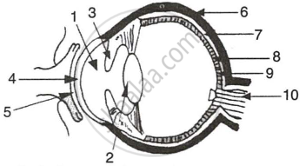Advertisements
Advertisements
प्रश्न
fill in the following blank with suitable word:
A person is short-sighted if his eyeball is too............Spectacles with a .............lens are needed. A person is long-sighted if his eyeball is too............Spectacles with a ................lens are needed. These focus light rays exactly on to the..........
उत्तर
A person is short-sighted if his eyeball is too long. Spectacles with a concave lens are needed. A person is long-sighted if his eyeball is too short. Spectacles with a convex lens are needed. These focus light rays exactly on to the retina.
APPEARS IN
संबंधित प्रश्न
How does the eye regulate the amount of light that falls on the retina?
What shape are your eye-lenses:
when you look at your hand?
State the function of each of the following parts of the human eye:
(i) Cornea
(ii) Iris
(iii) Pupil
(iv) Retina
Millions of people of the developing countries are suffering from corneal blindness. This disease can be cured by replacing the defective cornea with the cornea of a donated eye. Your school has organised a campaign in the school and its neighbourhood in order to create awareness about this fact and motivate people to donate their eyes after death. How can you along with your classmates contribute in this noble cause? State the objectives of organising such campaigns in schools.
Name the part of the eye which gives colour to the eyes.
What kind of lens is there in our eyes? Where does it form the image of an object?
The coloured portion of the eye is the ______.
Select the option with incorrect identification:

The layer in the eye where sensory cells (rods and cones) are located ______.
Differentiate between members of the following pair with reference to what is asked in the bracket.
Aqueous humour and vitreous humour (location).
The figure given below refers to the vertical section of the eye of a mammal. Study the figure carefully and answer the following questions.
 |
- Label the guidelines shown as 1 to 10.
- Write one important role of parts shown as 3 and 7.
- Write one structural difference between the parts shown as 9 and 10.
- Mention one functional difference between the parts shown as 6 and 8.
